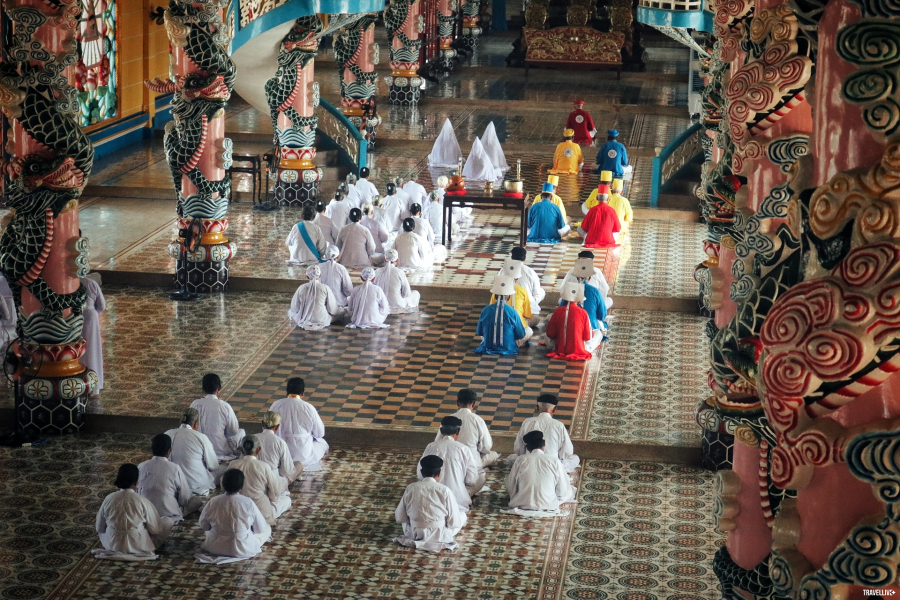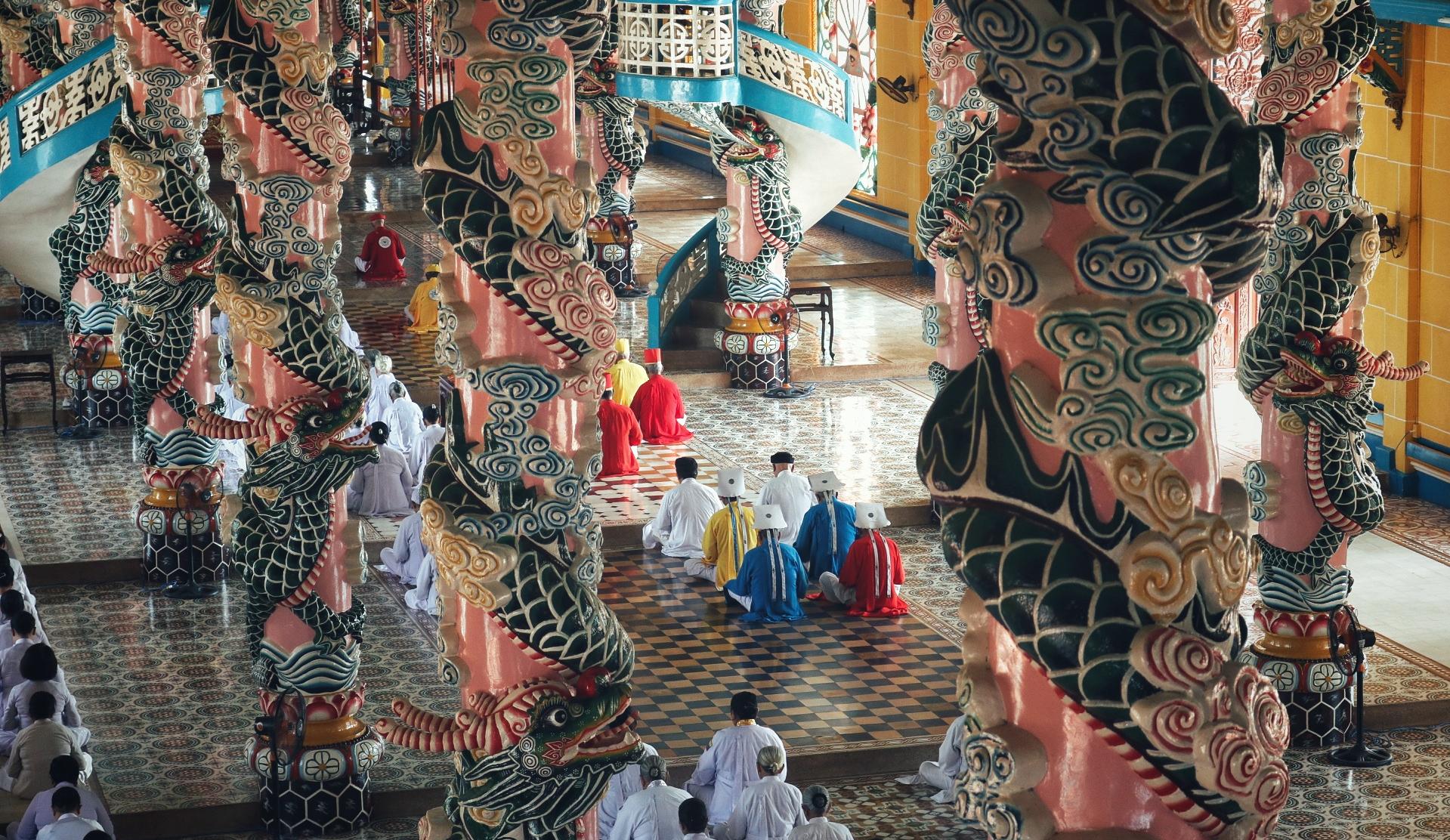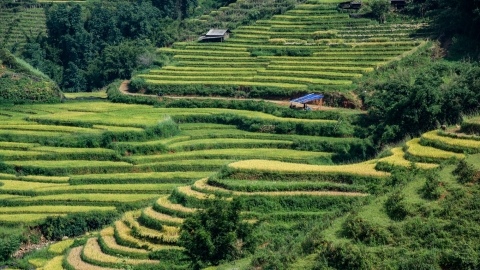People often come to Tay Ninh to enjoy the famous Trang Bang noodle soup, or buy some soft and chewy rice paper skewers mixed with spicy shrimp salt with the strong aroma of garlic and chili. We were different, we wanted to participate in a midday worship of Cao Dai followers. Local people often call it the Midday Worship.
the way to the cradle of Cao Dai religion
At five in the morning, the sky of Saigon was still dark, probably the city was still buried in a late sleep from the previous day. The weekend road was quite deserted, we quickly headed towards An Suong roundabout and followed Highway 22 to Tay Ninh. The car drove more than 50 kilometers, the urban scene gradually emptied, replaced by fields of yellow-brown stubble after the harvest. Occasionally, we passed through a few towns, Trang Bang and Go Dau. On the way, Ba Den Mountain appeared in the distance - the roof of the Southern region, lying alone in the middle of the vast plains, like an upside-down bowl. On the top of the mountain, white clouds covered it thickly. I heard that the locals had passed on their experience that "if the mountain lady wears a hat, it will rain". The image of the mountain appeared throughout the trip, sometimes far away, sometimes close, quite interesting.
After more than 2 hours of driving, we arrived at Hoa Thanh town, an important stop on the trip to Tay Ninh. Following the instructions from the local people, we went to the Tay Ninh Holy See, the cradle of the Cao Dai religion in the 20th century.
beliefs in the real world
At about 12 o'clock, we took the opportunity to walk from the Hoa Vien gate into the sanctuary. The inner sanctum of this sanctuary is almost a miniature city, full of architectural works with different functions. Accompanying us were groups of tourists from many other countries, both European and Asian. They, like us, could not help but be surprised by a new and unique architectural work. At first glance, this pagoda looks like a Catholic cathedral, but up close, we saw the yellow wall architecture, red tiles, and lotus flowers typical of Buddhist temples in Vietnam. It must be said that Cao Dai followers are quite skillful in combining many aesthetic values of both the West and East in a compact architectural complex with a width of only about 20 meters and a length of more than 100 meters.
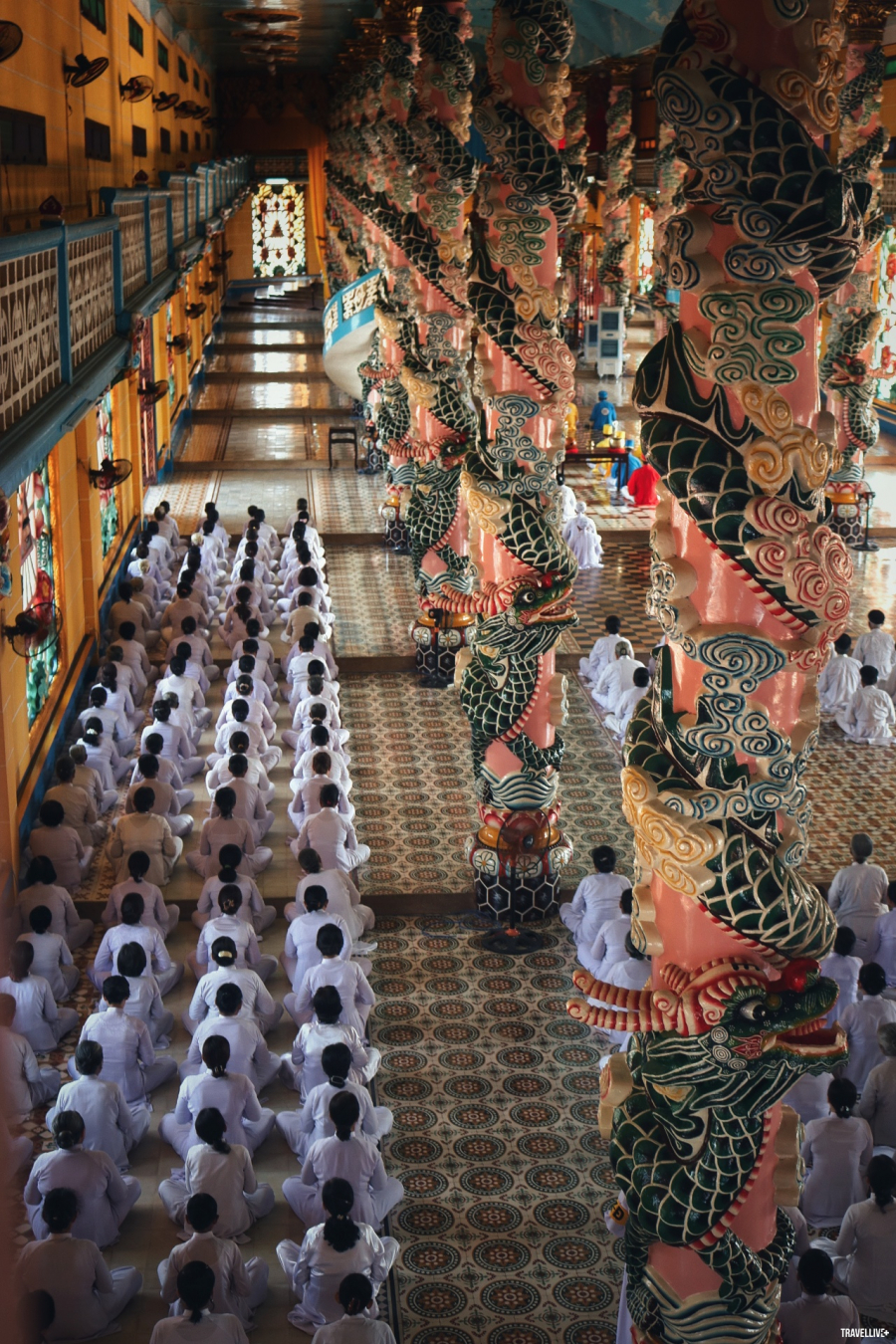
We were guided by female followers wearing white ao dai, with their hair tied in a bun in the style of Southern Vietnamese women of the previous century, up the small staircase to the upper floor so that we could clearly observe the upcoming worship. There were quite a few followers wearing white ao dai. They were busy arranging musical instruments, incense and fruits, each person doing a task quite quickly. The scent of incense wafted through the large space. At the round table, there were about six people sitting, tuning the strings and testing the sound of each musical instrument. Although there were quite a lot of people, it did not create any noise. The Cao Dai followers prepared everything quite rhythmically, perhaps this was a daily activity for them.

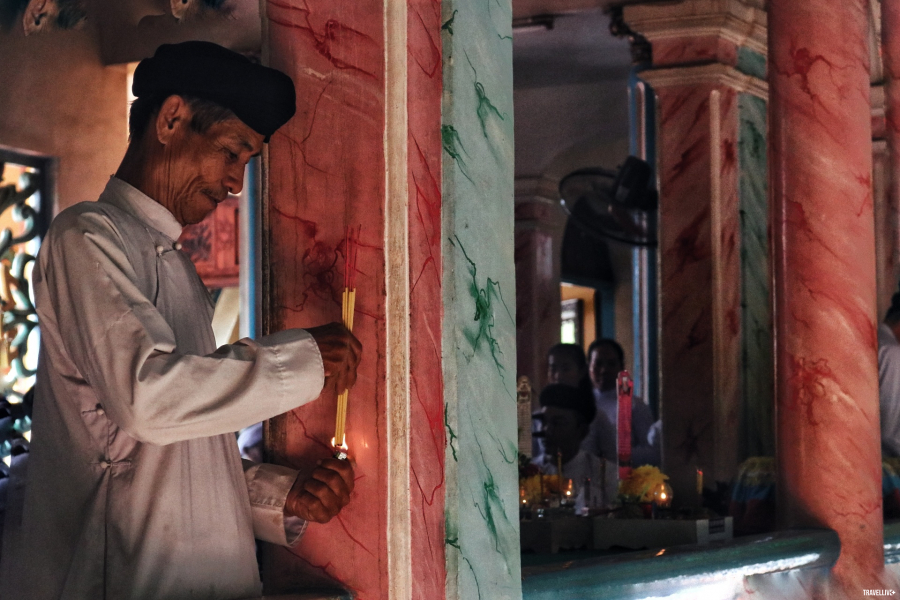



Bong… bong… bong…
Each bell rang out long inside and outside the Holy See Pagoda, each line of followers in yellow, blue, red and white costumes lined up to enter the main hall inside. They lined up neatly and bowed to each chant that was chanted along with the continuous bell ringing. A sound of a zither rang out, then the sounds of a zither, a two-stringed fiddle and a song lang together created a familiar melody that was very ethnic, often appearing in the singing of worshiping at temples and shrines in our childhood memories. Immediately after, a group of Cao Dai female children chanted prayers like a long song praising the Creator's grace, the rhythm sometimes deep, sometimes clear and resounding, echoing throughout the quiet space.

The worshippers attending the ceremony were almost completely focused on the image of the Eye of Heaven, simply called the eye of the sun, representing the presence of God. Occasionally, bells rang as a signal, the worshippers nodded in unison and bowed rhythmically and regularly.
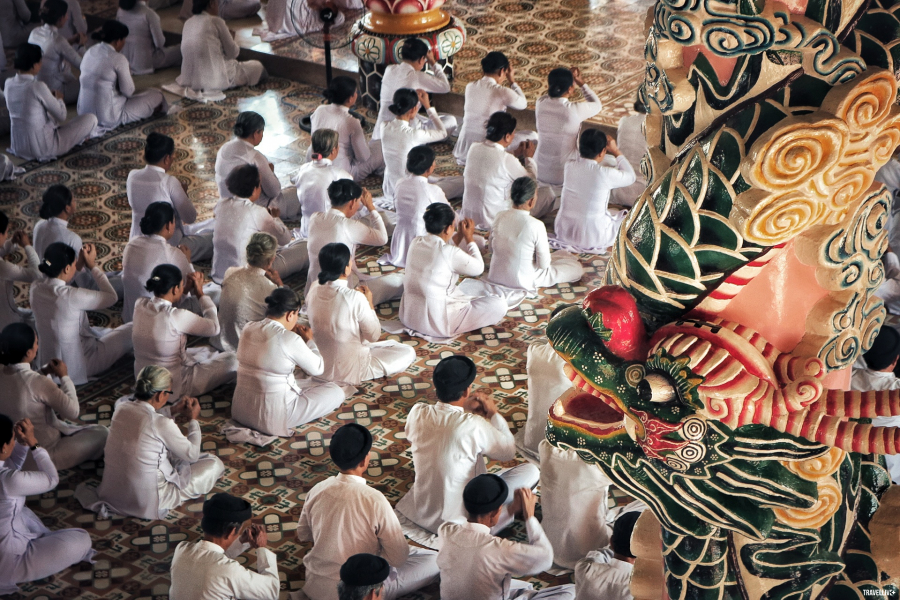
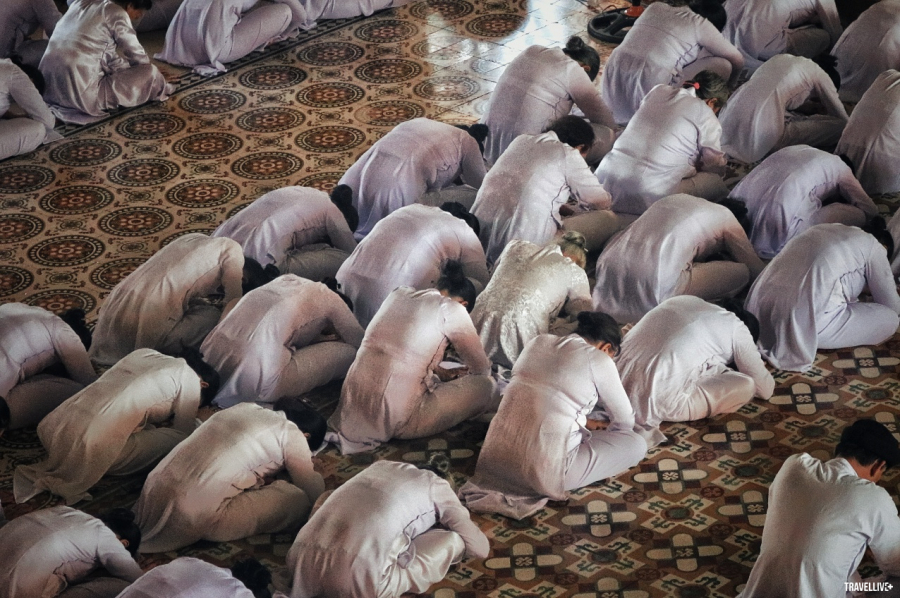
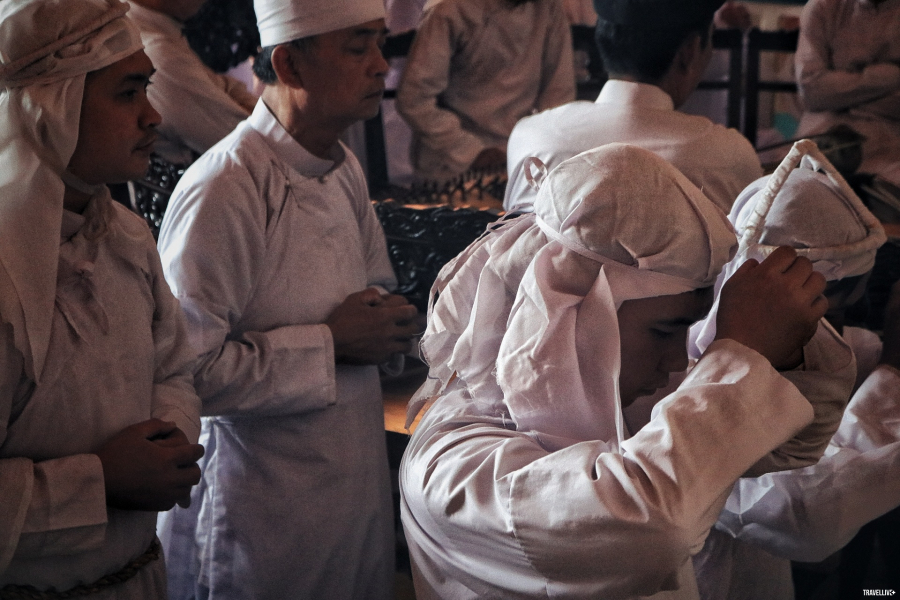
The worshippers attending the ceremony were mostly elderly. Some had white hair and stooped backs, giving them the appearance of being elderly. They seemed more optimistic and wise than their appearance.
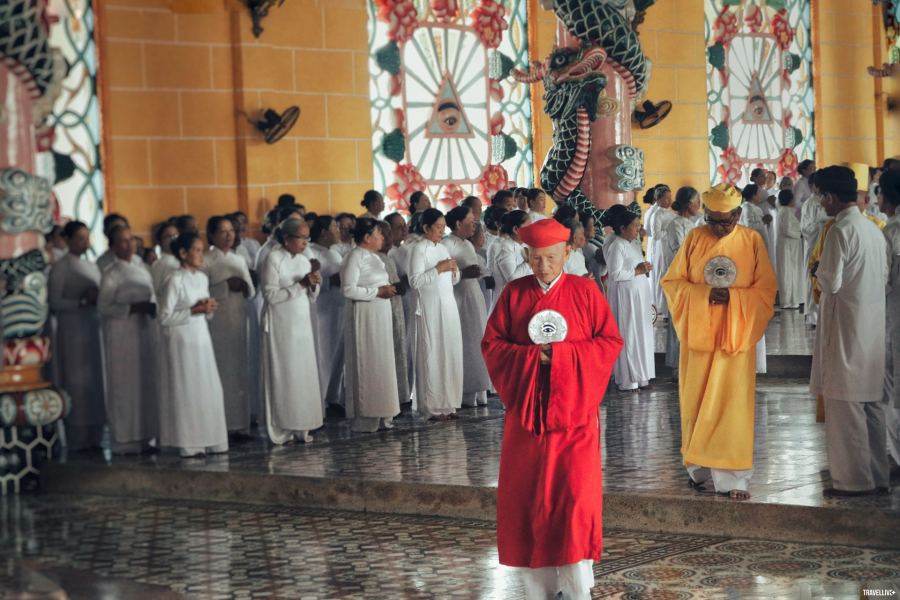
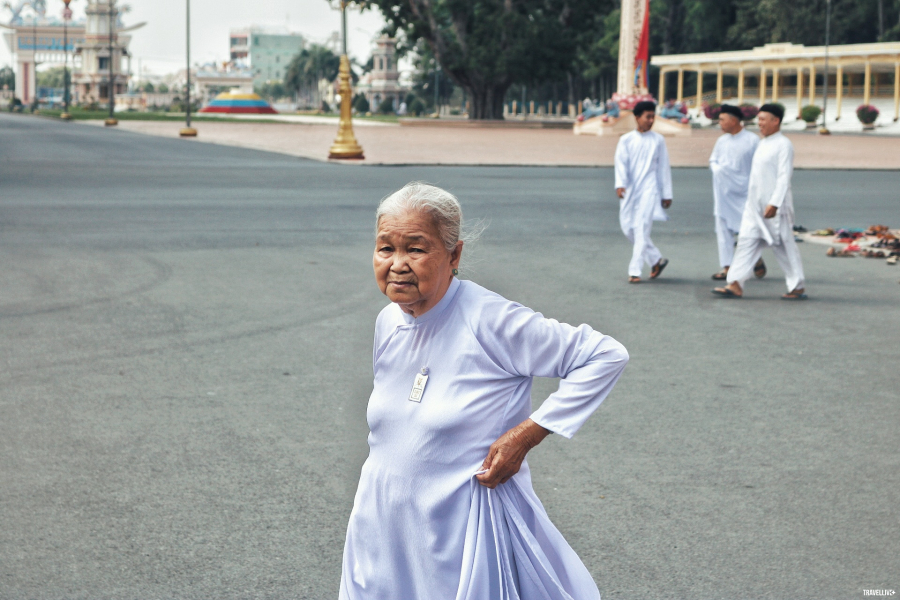
After the ceremony, the followers chatted and asked each other questions, telling each other stories about their daily lives. They were strangers, but because they shared the same religion, they affectionately called each other brothers and sisters. We asked an elderly man what made him, despite his old age, still come to this Ngo ceremony. He smiled, full of enthusiasm, and said: "Because of his faith in life, in the good and kind things whether he is alive or dead. He believes that a Cao Dai follower has the heart of a Bodhisattva, the forehead of Confucius, the hands of Jesus and the lifestyle of Lao Tzu."
